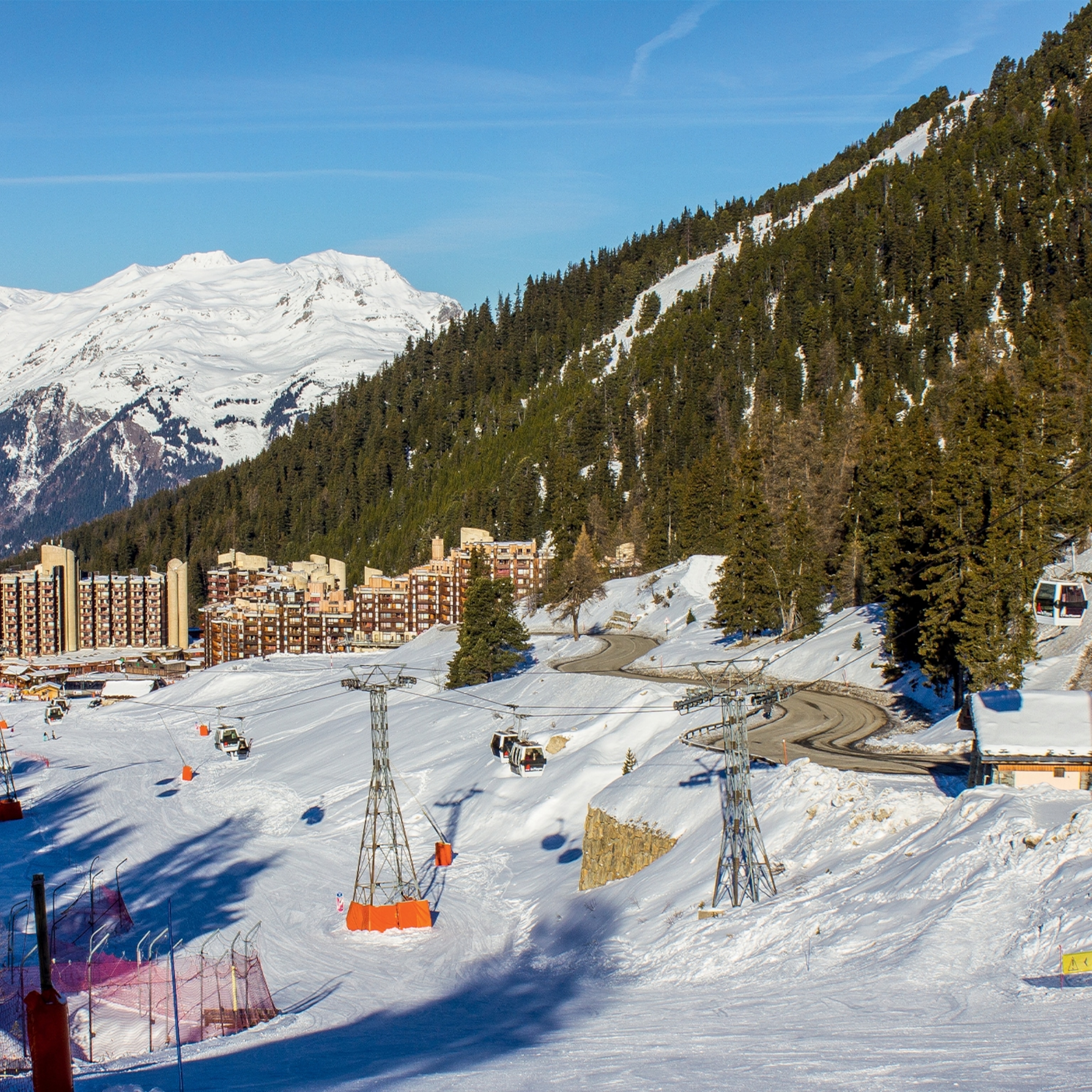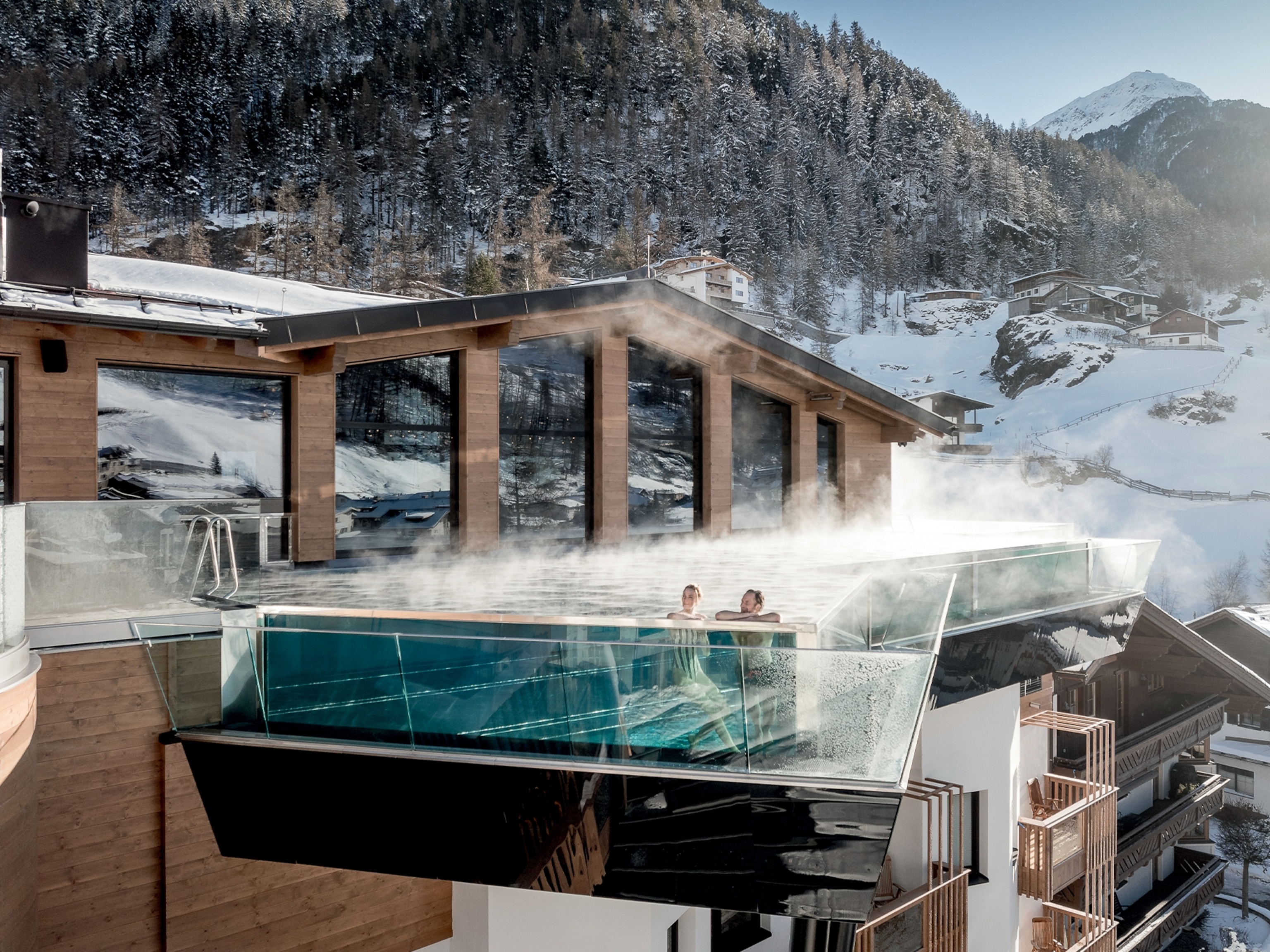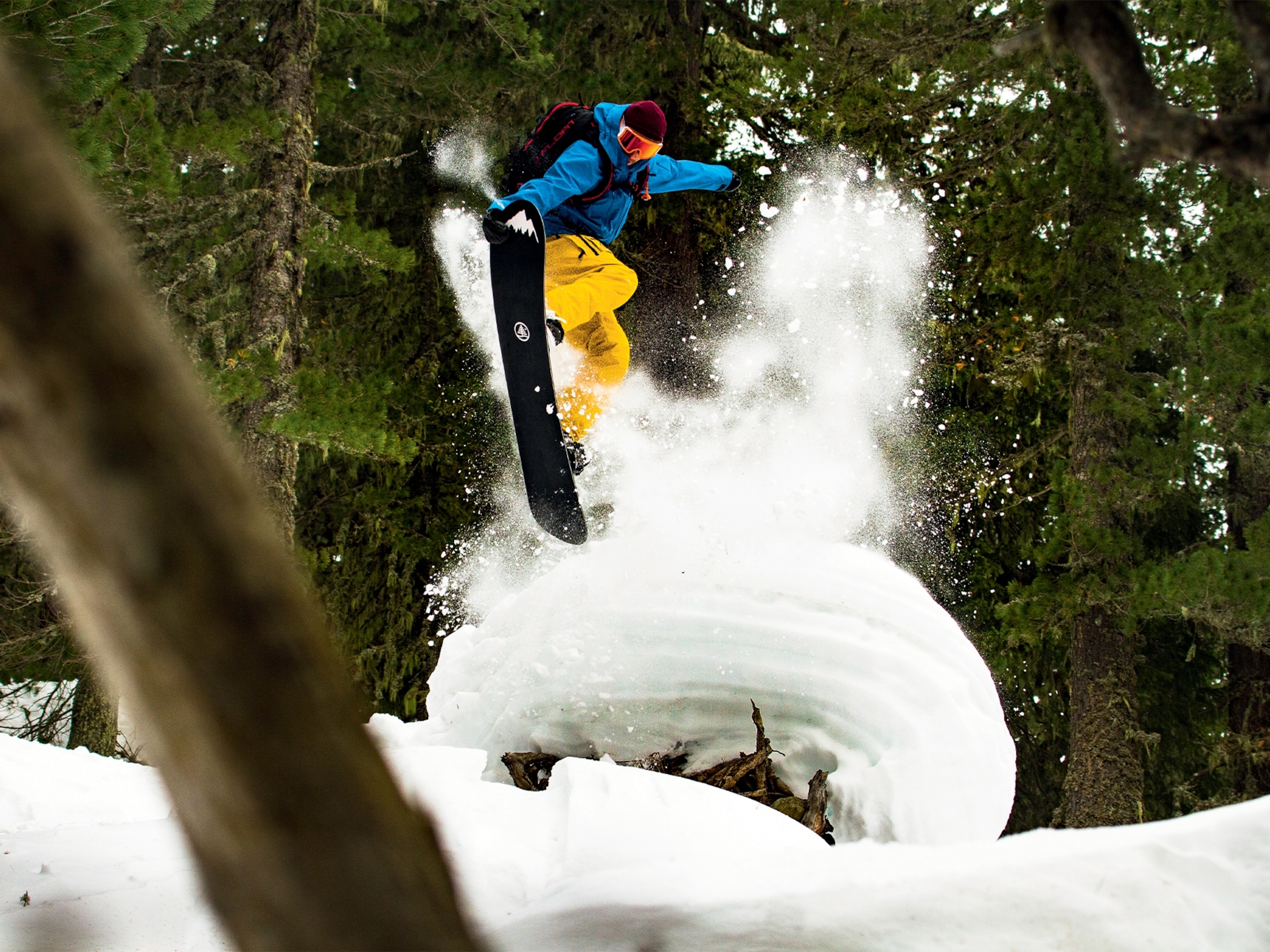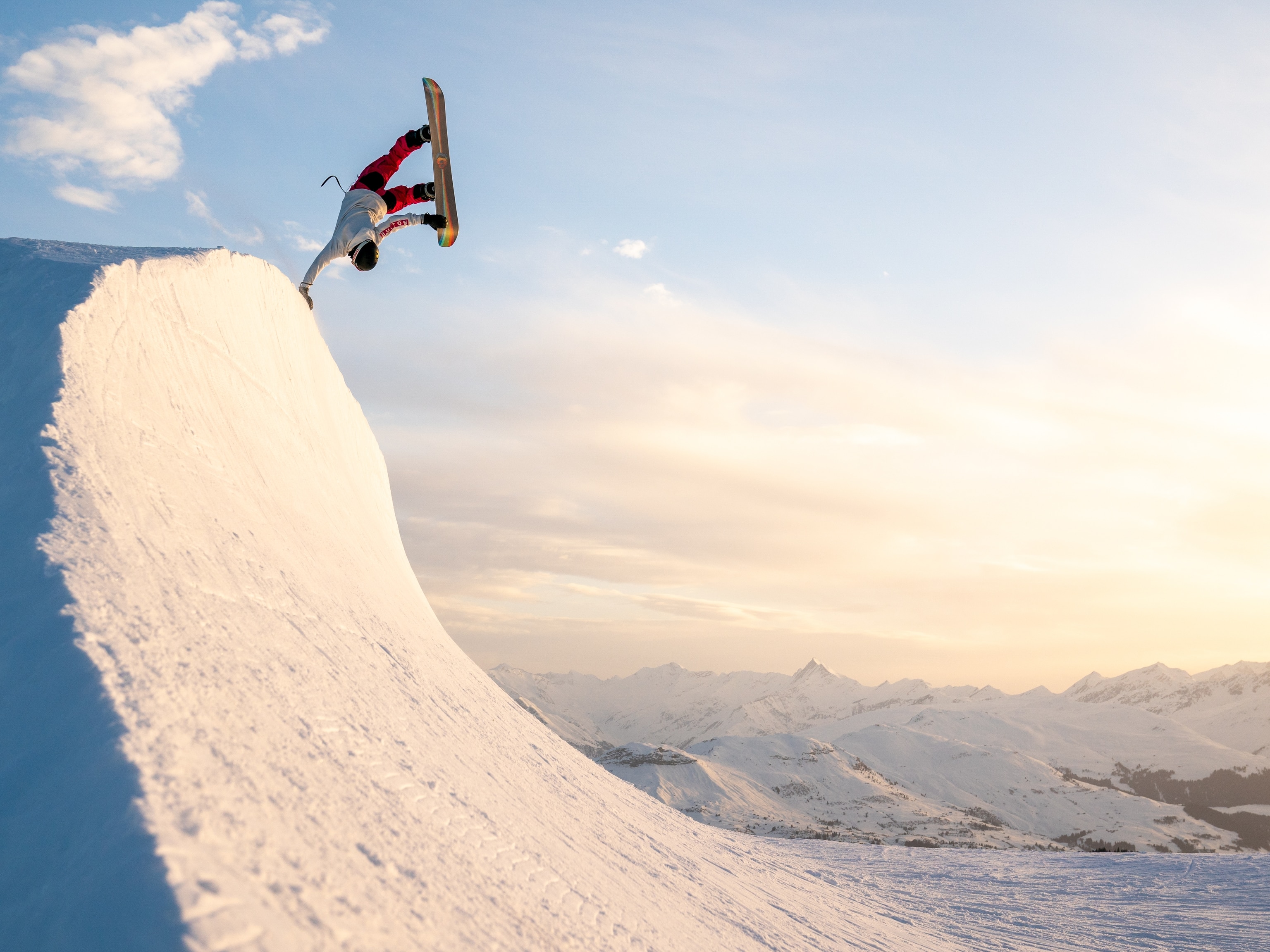The Roman spa town where you can ski Olympic pistes and soak in thermal springs
Rich in Roman history, fine dining and therapeutic thermal waters, Bormio is backed by world-class ski slopes that will play host to the next Winter Olympics.

Mist rises off 41C thermal waters and floats across the snowdrifts that have settled beyond the infinity pool and out into the valley. Around me, scantily clad bathers are chatting and canoodling, all eyes returning regularly to the spectacular peaks, the snow-clad crags of the Italian Dolomites, crowned by piercing cyan skies and the silent circling flight of a golden eagle.
The Romans knew a thing or two about flawless locations. When they discovered hot springs bursting from the ground here high in the Alps, they very sensibly built bathing houses in which to socialise and soak. There have been baths in Bormio for more than 2,000 years and the QC Terme Bagni Vecchi, where I am, is built on the original foundations of those ancient Roman pools. And they’re just as popular now as they were back then. Rumour has it, Pliny the Elder and, later, Leonardo de Vinci have stopped by to immerse themselves in the thermal waters.
And in 21st-century Bormio, the bathing opportunities don’t stop at the old baths. QC Terme Bagni Nuovi (‘new baths’), an art nouveau pink edifice straight out of the Wes Anderson style book, offers soak-seekers a more contemporary affair, framed by pine-forested slopes. The water-based wellbeing choices here are almost infinite; an entire day wouldn’t be enough to try everything. I swim in log fired pools, dunk in plunge baths filled with great hunks of ice and brave jets of water alternating from hot to head-numbingly freezing. I sweat it out in saunas and steam rooms scented with fat bunches of dried lavender and baskets abundant with citrussy curls of pinewood, scooping handfuls of soft clay mud, which I apply liberally before baking myself like a loaf in the heated log cabin next door. Finally, I fall onto a lounger to bask in the panorama.
Known locally as Wellness Mountain, Bormio has the Alp’s largest thermal park, shared between three spas — the Vecchi and Nuovi, which are open only to visitors aged 14 or over, and the third, in the town centre, is open to all. This being Italy, each includes a tasty, mid-dunk feast of local cheese, salami, olives and a glass of something cold and bubbly.
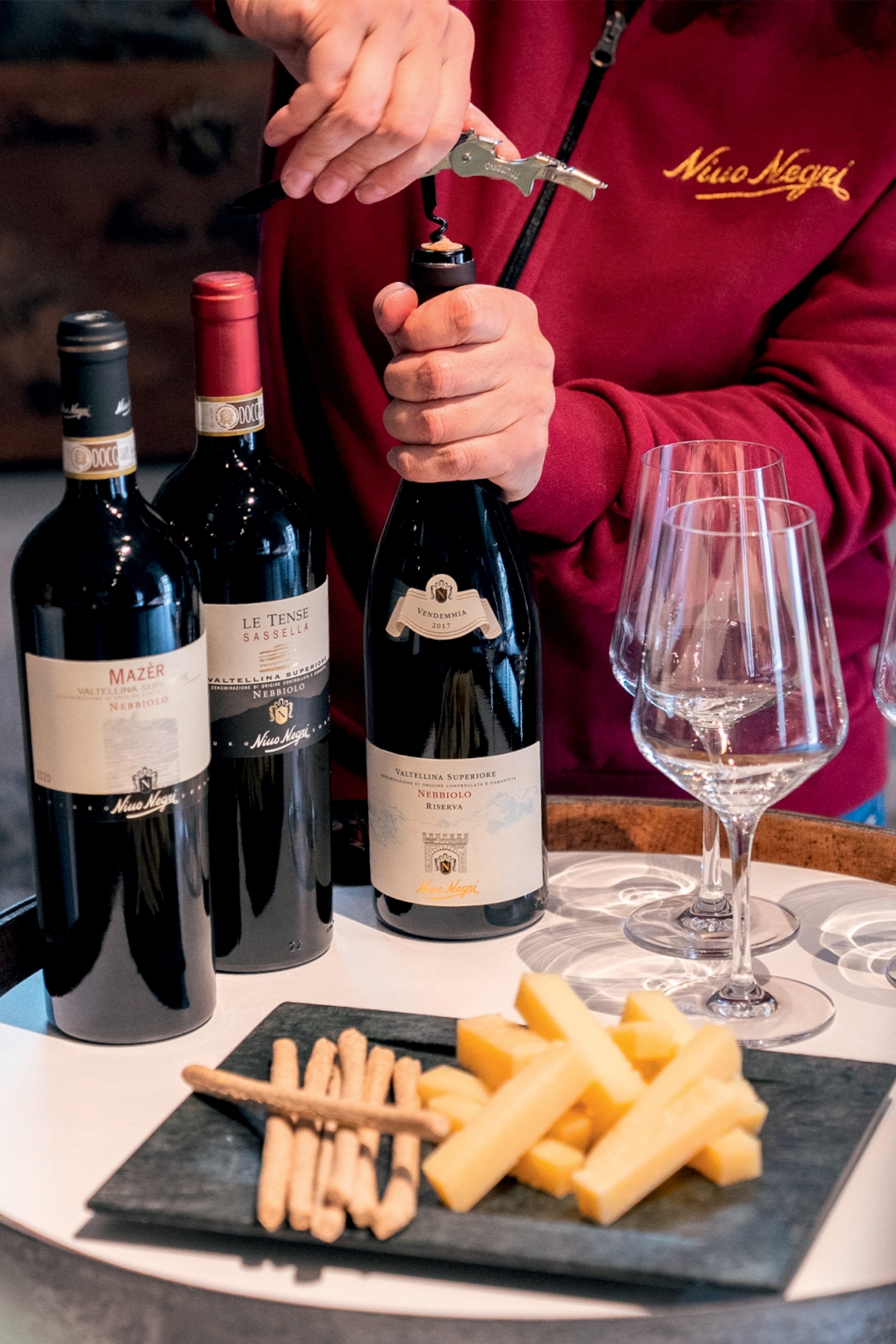

While afternoons in Bormio are billed for soaking, I spend my mornings on the mountain. The resort is a regular stop on the World Cup circuit. It’s hosted world-class events for over 40 years, including the Alpine Skiing World Cup, the annual England National Skiing Championships and, in 2026, it’ll welcome the Winter Olympics: Men’s Downhill, Super G, Alpine Skiing and Men’s Slalom.
Pista Stelvio is considered one of the most scenic and challenging — known as ‘La Scala’ of winter sports alluding to its operatic drama befitting Milan’s celebrated theatre. Champions such as Deborah Compagnoni and Pietro Vitalini were born on these slopes, whose maximum incline is 63%. One of the most difficult parts, the San Pietro jump, has a 55% incline on which skiers travel at speeds above 87mph. I give it a miss.
If, like me, you’re an intermediate skier, Bormio has a good range. The lifts hit the top at just over 9,845ft, where little fluffy clouds and a vast skyscape stretches across the spires of the Alps. The resort’s 85 miles of piste takes in four ski areas — Bormio, Santa Caterina Valfurva, Cima Piazzi-San Colombano and the Stelvio Glacier — covered by a generous network of 44 ski lifts dropping me onto slopes that are mostly graded red or blue. It’s moderate and accessible, but Fabio Giacomelli, a local who works the lifts and has skied here for more than 30 years, assures me that if a beginner learns here, they’ll be able to ski anywhere.
“You ski a whole week here, and by the end, you’re good! Plus, the drop is skiable,” he says, referring to the resort’s dramatic summit to base ski run — one of Italy’s longest at 5,905ft with snow cannon coverage keeping it open all season. “But February is the best time to come,” Fabio opines. “Especially the second half — there’s more sun, the conditions are perfect and the whole mountain is usually covered with snow.”
Locals are a friendly, hardy bunch who have fiercely defended the town’s independence over the centuries. As a major trading route between Venice and Switzerland, Bormio has fought off the Swiss, the Austrians and Napoleon. Today, vestiges of this early wealth and power are evident. Medieval frescoes from the 17th century are etched on church ceilings and across buildings flanking the town’s pretty cobbled streets.
Here, I meet mountain guide Luca Salvadori and we head up into the Alpine pastures. “It’s a grade four today,” he says, noting the elevated avalanche grading. His jaunty felt hat tied with string, Luca smiles easily, wide blue eyes ringed with white circles left by his near-permanently worn sunglasses. “The highest is five,” he continues, packing his rucksack with a snow probe, a shovel and a bottle of Amaro Bràulio, a local herby liquor.
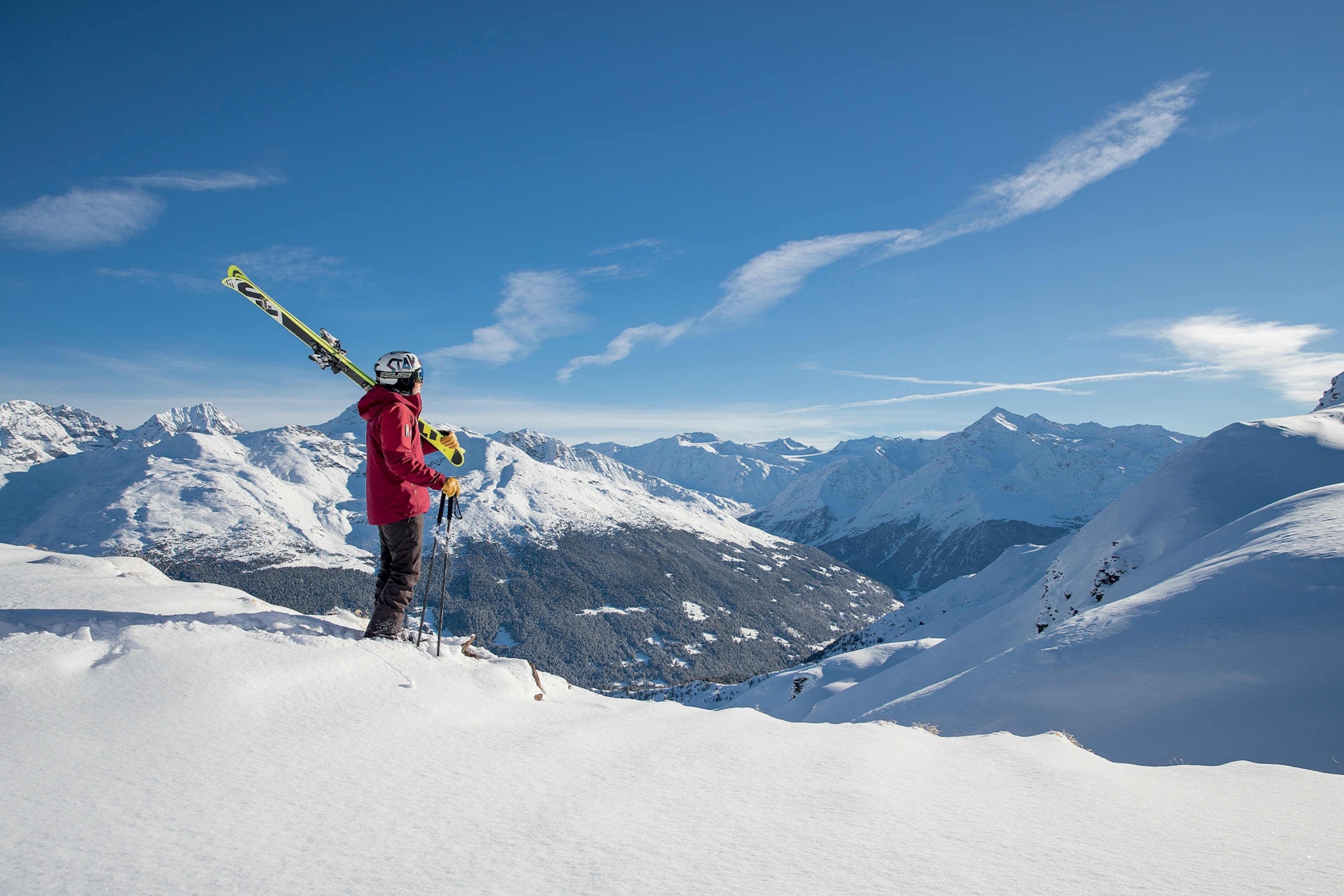
We’re off snowshoeing. Avalanches aside, it’s a quietly beautiful way to experience the landscape, far from the rumpus of skiers and lifts. And it’s just one of the activities to tempt those not drawn to downhill skiing — fat-biking, dog sledding and exploring almost 30 miles of cross-country ski terrain are just some of Bormio’s offerings.
Wearing avalanche transceivers, radio-like contraptions tucked under our coats, and wide plastic shovel-like shoes strapped to our boots, we traverse clutches of snow-sprinkled spruce and larch. We spot flattened needle beds, the overnight refuge of the region’s red deer and chamois goats, and pass icy waterfalls embellished with toothy stalactites. Luca points out wolf tracks and an ibex perched on a steep bluff. It’s at once serene and also energy-sapping. We refuel with lunch at Rifugio Stella Alpina — platters of tangy mountain cheese and slithers of bresaola (air-dried, salted beef) served with fresh rocket and walnuts hit the spot.
Food here is hyper local, harvested from the mountains. Delicate alpine flowers are plucked to make the bitter-sweet Bràulio; plump porcini, amber chanterelles and juicy blueberries are liberally scattered into risottos, pancakes, stews and salads. And all this is served cosy rustic restaurants and agritourism lodges.
I stay at Agriturismo San Gallo, a wooden farmhouse on the fringes of Bormio surrounded by snowy fields and epic mountain views. I roll home each evening to a waiting sauna, while each day begins with breakfast banquets of freshly squeezed blood oranges, homemade cakes, pancakes and jams, plus farm-fresh cream and eggs. Elsewhere, a snowcat ride up almost vertical slopes takes me to Sunny Valley Kelo Mountain Lodge, helmed by local chef Tommaso Bonseri Capitani, who led the Italian national culinary team to victory at the Global Chef Challenge competition in 2022.
His delicate porcini muffins and homemade sake flavoured with alpine flowers is epicurean nirvana. Tommaso smiles at my heady expression. “This location is like a Ferrari,” he says, gesturing to the peaks beyond the windows. “So, we must do it justice.” I, however, have been distracted by the wine cellar. On show off the dining area, it’s replete with premium Italian reds made with the Nebbiolo grape grown nearby on the steep slopes of the surrounding Valtellina region — the perfect pairing with my porcini. Embraced by a towering, granite landscape streaked with glaciers, these are vines, just like Bormio’s ski slopes, that are woven into some of the Alp’s most spectacular landscapes. So, when you’re watching the 2026 Winter Olympics, remember to look up and around: beyond the piste, there’s real drama unfolding.
How to do it
Airlines flying between the UK and Milan or Verona, three hours away, include British Airways, EasyJet, ITA Airways and Ryanair.
Buses make regular transfers between Milan’s airports and Bormio (around 2-3 hours). You can use Perego bus or Silvestri bus.
Agriturismo San Gallo has doubles from £125 per night, B&B.
More info:
bormio.eu
This story was created with the support of Black Tomato and Das Central.
To subscribe to National Geographic Traveller (UK) magazine click here. (Available in select countries only).
